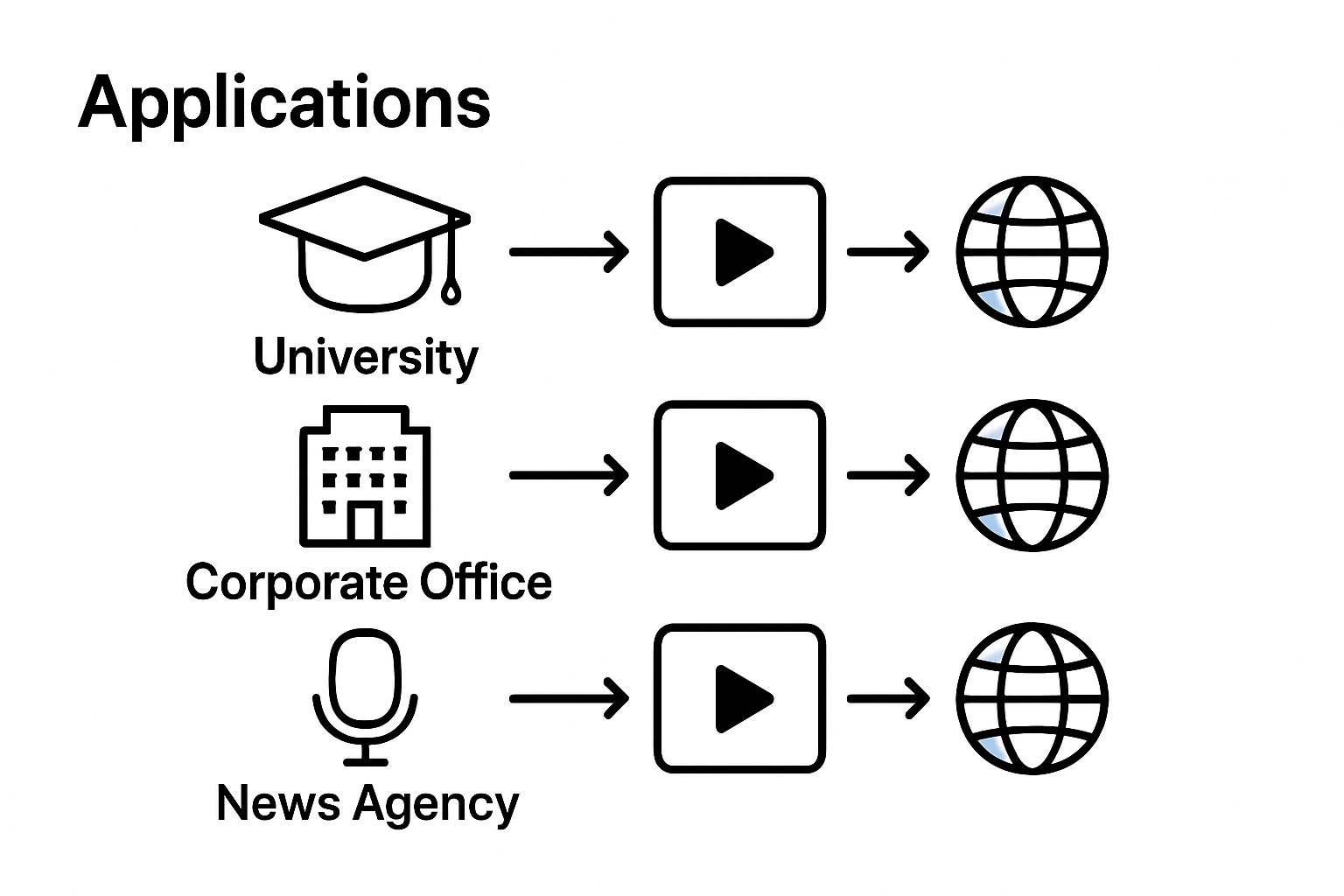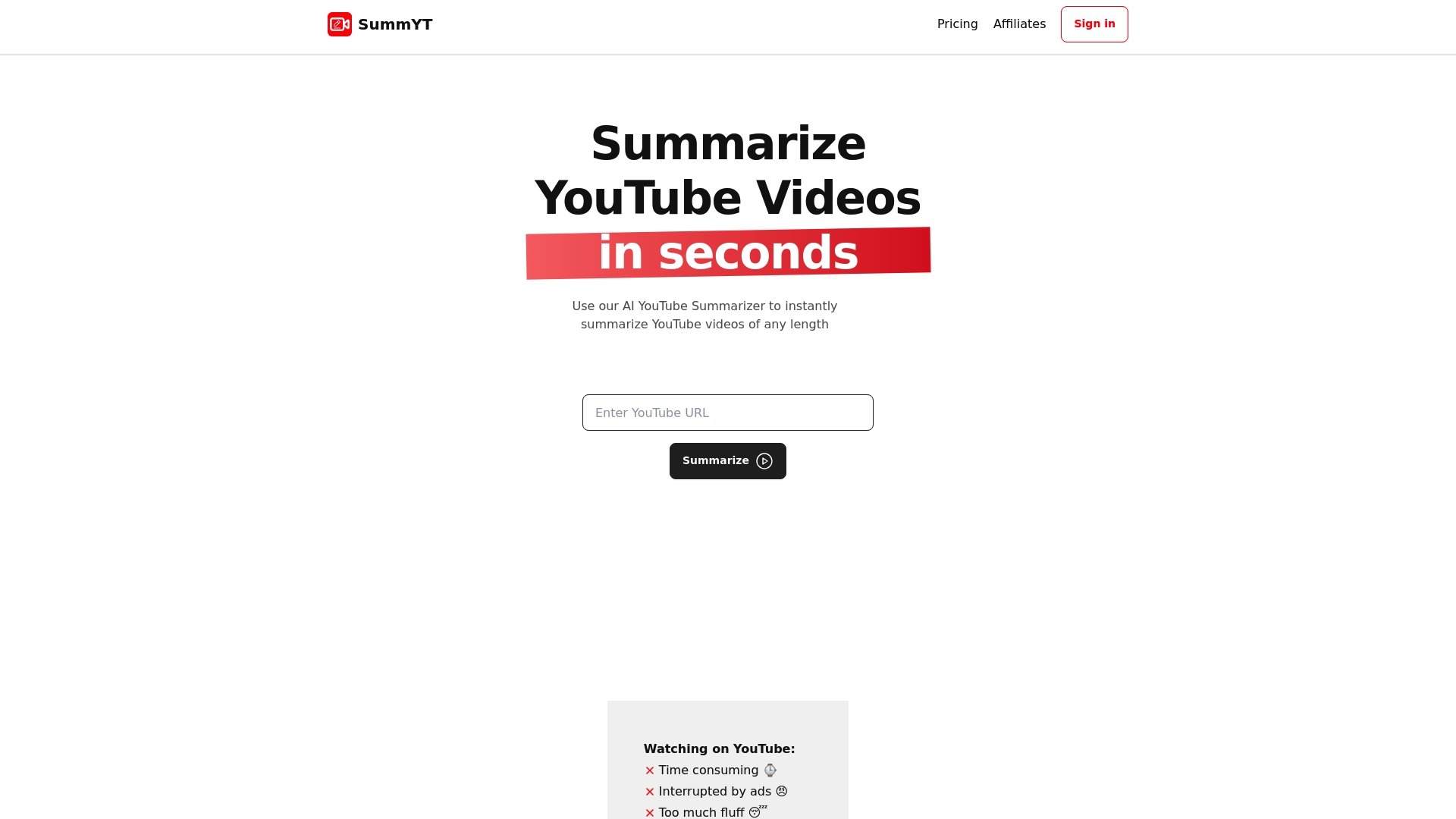Understanding the Multilingual Video Summarization Guide

Multilingual video summarization is completely changing how we share information across different languages. You might think translating a video is already complicated, but machine learning models now generate video summaries that can cross over a dozen languages at once. This technology goes far beyond subtitles, since it actually understands and condenses content so people anywhere can instantly access the key points no matter what language they speak.
Table of Contents
- What Is Multilingual Video Summarization?
- Why Multilingual Video Summarization Matters
- How Multilingual Video Summarization Works
- Key Concepts In Multilingual Video Summarization
- Real-World Applications Of Multilingual Video Summarization
Quick Summary
| Takeaway | Explanation |
|---|---|
| Multilingual video summarization breaks language barriers. | This technology allows users from different linguistic backgrounds to access video content clearly and efficiently, improving comprehension. |
| Advanced AI enhances video content accessibility. | Utilizing speech recognition, translation algorithms, and content extraction, this method transforms how information is shared across cultures. |
| Applications span various sectors globally. | Multilingual video summarization is useful in education, corporate training, journalism, and diplomatic communication, facilitating effective information sharing. |
| Context preservation is crucial for accurate summaries. | The technology focuses on maintaining the original message’s meaning and emotional nuance, resulting in more relevant summaries for diverse viewers. |
| Research supports the value of this technology. | Studies demonstrate its potential to revolutionize cross-cultural communication and knowledge exchange by enabling high-quality, contextually relevant video summaries. |
What is Multilingual Video Summarization?
Multilingual video summarization represents an advanced technological approach that transforms how we comprehend and interact with video content across different language barriers. This innovative technique combines artificial intelligence, natural language processing, and machine learning to generate concise, accurate summaries of video materials that can be understood by viewers speaking various languages.
The Core Concept
At its fundamental level, multilingual video summarization goes beyond traditional video summarization by enabling content comprehension across linguistic boundaries. Unlike standard video summaries that typically exist in a single language, this approach creates summaries that are linguistically adaptable, allowing viewers from different cultural and linguistic backgrounds to access key information quickly and efficiently.
The process involves several sophisticated technical components:
To clarify the main technical components involved in multilingual video summarization, the following table breaks down each foundational element and its specific role in the overall process.
| Technical Component | Description |
|---|---|
| Advanced Speech Recognition | Converts spoken language in videos into accurate text transcripts for further processing. |
| Automated Transcription Technologies | Transcribes audio elements into text, providing a basis for translation and summarization. |
| Machine Translation Frameworks | Translates extracted textual content into multiple languages, preserving meaning and nuance. |
| Natural Language Understanding | Analyzes context and semantic structure to interpret video content accurately. |
| Semantic Content Extraction Models | Identifies and extracts key information, ensuring summaries capture essential video content. |
| Multimodal Learning Algorithms | Integrates textual, audio, and visual data to create contextually rich summaries. |
| Context-Aware Content Extraction | Adjusts summary generation based on situational and cultural context for greater accuracy. |
- Advanced speech recognition technologies
- Automated translation algorithms
- Semantic understanding and content extraction techniques
- Machine learning models trained on diverse multilingual datasets
Technical Mechanisms
Multilingual video summarization operates through a complex sequence of computational steps. According to IEEE research on multilingual technologies, the process begins with extracting audiovisual content, transcribing spoken language, analyzing semantic context, and then generating summaries that maintain the original video’s core message across different linguistic representations.
The technology enables read more about video summarization techniques that bridge communication gaps, making information more accessible to global audiences. Whether it involves educational lectures, corporate training videos, international news reports, or multimedia content, multilingual video summarization ensures that language differences do not impede knowledge transfer.
By leveraging cutting-edge artificial intelligence, this approach represents a significant advancement in making digital content truly universal, breaking down linguistic barriers and creating more inclusive communication channels across the global digital landscape.
Why Multilingual Video Summarization Matters
Multilingual video summarization has emerged as a critical technological solution addressing the complex challenges of global information accessibility and cross-cultural communication. By transforming how diverse audiences consume and understand video content, this innovative approach tackles significant barriers that traditionally limit knowledge sharing and cultural exchange.
Global Information Accessibility
In an increasingly interconnected world, information transcends linguistic boundaries. Multilingual video summarization enables individuals from different linguistic backgrounds to access and comprehend critical content without language restrictions. This democratization of information proves especially crucial in sectors like education, international business, research, and global media.
Key implications of multilingual video summarization include:
- Breaking down language barriers in knowledge transfer
- Enabling global workforce training and collaboration
- Supporting cross-cultural understanding and communication
- Expanding educational resources beyond local language limitations
Economic and Cultural Significance
The economic potential of multilingual video summarization extends far beyond simple translation. According to research from the International Scientific Journal of Engineering and Management, this technology represents a transformative approach to global content consumption, allowing organizations and individuals to efficiently process and understand multimedia content from diverse linguistic sources.
explore video summarization techniques for global communication that bridge cultural and linguistic divides. Whether in academic research, corporate training, international journalism, or digital content creation, multilingual video summarization provides a powerful tool for breaking down communication barriers.
By leveraging advanced artificial intelligence and natural language processing, this technology not only translates content but also preserves contextual nuances, ensuring that the original message remains intact across different linguistic interpretations. The result is a more inclusive, accessible, and interconnected global information ecosystem.
How Multilingual Video Summarization Works
Multilingual video summarization involves a sophisticated, multi-stage computational process that transforms complex audiovisual content into concise, language-independent summaries. This intricate technology combines advanced machine learning algorithms, natural language processing techniques, and intelligent content extraction methodologies to generate meaningful representations across linguistic boundaries.
Technical Architecture
The process begins with comprehensive audiovisual data analysis, where multiple sophisticated technologies work in synchronization.
The system deconstructs video content into fundamental components, extracting critical information through interconnected computational stages that ensure semantic accuracy and linguistic flexibility.
Key technological components include:
- Advanced speech recognition systems
- Automated transcription technologies
- Machine translation frameworks
- Natural language understanding algorithms
- Semantic content extraction models
Processing Workflow
Multilingual video summarization operates through a complex sequence of computational steps. According to research from the Vision and Learning Group, the workflow involves identifying representative video segments, analyzing contextual relationships, and generating summaries that maintain the original content’s core message.
discover advanced video summarization techniques that transform multimedia content processing. The process essentially involves four primary stages: preprocessing, feature extraction, summary generation, and multilingual translation.
The system employs deep learning models trained on extensive multilingual datasets, enabling precise semantic understanding that transcends individual language constraints. By integrating computer vision, speech recognition, and natural language processing, these advanced technologies can interpret video content contextually, preserving nuanced meanings while generating accurate, linguistically adaptable summaries.
Key Concepts in Multilingual Video Summarization
Multilingual video summarization encompasses a complex array of technological and linguistic concepts that work together to transform video content into concise, accessible summaries across different languages. Understanding these fundamental principles is crucial for appreciating the sophisticated mechanisms behind this innovative technology.
Fundamental Technical Components
The core of multilingual video summarization relies on several interconnected technological domains that enable precise content extraction and linguistic translation. These foundational elements create a comprehensive framework for transforming multimedia content into intelligible summaries.
Critical technological foundations include:
- Multimodal learning algorithms
- Cross-linguistic semantic mapping
- Neural machine translation frameworks
- Context-aware content extraction
- Language-independent feature representation
Semantic Representation and Translation
According to an unsupervised video summarization framework, the process of generating multilingual summaries involves complex computational techniques that go beyond simple translation. The system must understand not just linguistic nuances but also contextual and visual information across different cultural and linguistic environments.
explore video content summarization strategies that bridge linguistic and cultural communication gaps. This involves developing advanced machine learning models capable of preserving the original video’s semantic integrity while making it accessible to diverse linguistic audiences.
The ultimate goal of these technological approaches is to create summaries that are not merely translated but genuinely localized, maintaining the original content’s core message, emotional tone, and contextual richness across different language ecosystems.

By integrating advanced natural language processing, computer vision, and machine learning techniques, multilingual video summarization represents a significant leap in global digital communication technologies.
Real-World Applications of Multilingual Video Summarization
Multilingual video summarization has rapidly evolved from a theoretical concept to a transformative technology with profound implications across numerous professional and academic domains. By bridging linguistic barriers and enabling efficient knowledge transfer, this innovative approach is reshaping how organizations and individuals consume and understand multimedia content.
Professional and Institutional Applications
In professional environments, multilingual video summarization serves as a critical tool for enhancing communication, training, and information dissemination. Global corporations, educational institutions, and international organizations can now share complex multimedia content seamlessly across linguistic boundaries, ensuring that critical information reaches diverse audiences without losing contextual nuance.
Key application domains include:
To provide an overview of the professional and institutional sectors benefiting from multilingual video summarization, the table below outlines application domains with corresponding impact and use cases.
| Application Domain | Impact/Use Case |
|---|---|
| International Corporate Training | Delivers training materials in multiple languages for a global workforce; enhances knowledge sharing. |
| Academic Research | Facilitates cross-border collaboration and access to international research output. |
| Multinational Conference Documentation | Summarizes presentations and webinars for attendees from diverse linguistic backgrounds. |
| Global Media and Journalism | Makes international news and media content accessible to a broader audience. |
| Diplomatic/Governmental Communication | Enables seamless communication and policy dissemination across different countries. |

- International corporate training programs
- Academic research and cross-border knowledge sharing
- Multinational conference and webinar documentation
- Global media and journalism platforms
- Diplomatic and governmental communication channels
Technological and Research Implications
According to research from the International Scientific Journal of Engineering and Management, multilingual video summarization represents a significant breakthrough in cross-cultural communication technologies. The research highlights how advanced Natural Language Processing models can generate high-quality, contextually relevant summaries that preserve the original content’s semantic integrity.
explore real-time content summarization strategies that are transforming information accessibility. This technology enables researchers, professionals, and content creators to rapidly process and understand multimedia content from diverse linguistic sources, breaking down traditional communication barriers and fostering global knowledge exchange.
By democratizing access to information and eliminating language-based restrictions, multilingual video summarization is not just a technological innovation but a powerful tool for global understanding, collaboration, and knowledge sharing across cultural and linguistic boundaries.
Unlock the Power of Multilingual Video Summarization Instantly
Are you struggling to break through language barriers when accessing vital video content? The Multilingual Video Summarization Guide highlights how understanding lectures, webinars, or industry talks in different languages can still feel overwhelming and time-consuming. Missing out on crucial knowledge due to limited language support and spending hours watching full videos are real pain points for many students, professionals, and lifelong learners. With SummYT’s advanced AI-powered multilingual video summarization, you do not just receive a translation—you get accurate, context-rich summaries that capture every important detail, no matter the original language.

Experience the future of efficient learning today. Visit SummYT’s homepage to see how automated, multilingual summaries make comprehension simple and fast. Try it now and see how SummYT transforms your YouTube experience with clear insights, time savings, and easy access to global knowledge.
Frequently Asked Questions
What is multilingual video summarization?
Multilingual video summarization is a technological approach that generates concise, accurate summaries of video content that can be understood by viewers in different languages, using AI, natural language processing, and machine learning.
How does multilingual video summarization work?
The process involves multiple stages: extracting audiovisual data, transcribing spoken language, analyzing semantic context, and generating summaries that retain the original video’s core message while adapting for different languages.
What are the benefits of using multilingual video summarization?
This technology enhances global information accessibility, breaks down language barriers, and facilitates cross-cultural communication, making it easier for diverse audiences to access educational resources, corporate training, and international media.
In which fields can multilingual video summarization be applied?
Multilingual video summarization is applicable in various domains, including corporate training, academic research, international journalism, and global media, where effective communication and information dissemination are vital.



